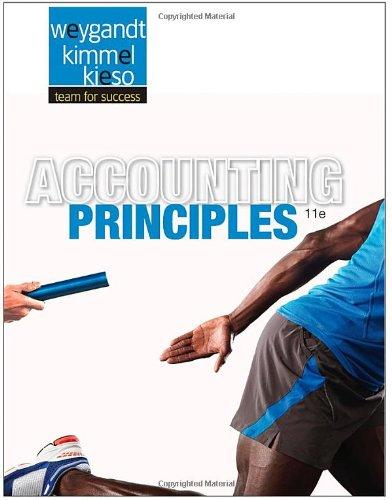The post-closing trial balance for Horner Co. is shown below. The subsidiary ledgers contain the following information:
Question:
The post-closing trial balance for Horner Co. is shown below.
.png)
The subsidiary ledgers contain the following information: (1) accounts receivable—B. Hannigan $2,500, I. Kirk $7,500, and T. Hodges $5,000; (2) accounts payable—T. Igawa $12,000, D. Danford $18,000, and K. Thayer $13,000. The cost of all merchandise sold was 60% of the sales price.
The transactions for January 2015 are as follows.
Jan. 3 Sell merchandise to M. Ziesmer $8,000, terms 2/10, n/30.
5 Purchase merchandise from E. Pheatt $2,000, terms 2/10, n/30.
7 Receive a check from T. Hodges $3,500.
11 Pay freight on merchandise purchased $300.
12 Pay rent of $1,000 for January.
13 Receive payment in full from M. Ziesmer.
14 Post all entries to the subsidiary ledgers. Issued credit of $300 to B. Hannigan for returned merchandise.
15 Send K. Thayer a check for $12,870 in full payment of account, discount $130.
17 Purchase merchandise from G. Roland $1,600, terms 2/10, n/30.
18 Pay sales salaries of $2,800 and office salaries $2,000.
20 Give D. Danford a 60-day note for $18,000 in full payment of account payable.
23 Total cash sales amount to $9,100.
24 Post all entries to the subsidiary ledgers. Sell merchandise on account to I. Kirk $7,400, terms 1/10, n/30.
27 Send E. Pheatt a check for $950.
29 Receive payment on a note of $40,000 from B. Stout.
30 Post all entries to the subsidiary ledgers. Return merchandise of $300 to G. Roland for credit.
Instructions
(a) Open general and subsidiary ledger accounts for the following.
101 Cash
112 Accounts Receivable
115 Notes Receivable
120 Inventory
157 Equipment
158 Accumulated Depreciation—Equipment
200 Notes Payable
201 Accounts Payable
301 Owner’s Capital
401 Sales Revenue
412 Sales Returns and Allowances
414 Sales Discounts
505 Cost of Goods Sold
726 Salaries and Wages Expense
729 Rent Expense
(b) Record the January transactions in a sales journal, a single-column purchases journal, a cash receipts journal (see Illustration 7-9), a cash payments journal (see Illustration 7-16), and a general journal.
(c) Post the appropriate amounts to the general ledger.
(d) Prepare a trial balance at January 31, 2015.
(e) Determine whether the subsidiary ledgers agree with controlling accounts in the generalledger.
Step by Step Answer:

Accounting Principles
ISBN: 9781118566671
11th Edition
Authors: Jerry Weygandt, Paul Kimmel, Donald Kieso





